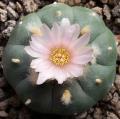
DMT-Nexus member
Posts: 1104 Joined: 11-Feb-2017 Last visit: 18-Jan-2021
|
I've looked into some old threads regarding THH synthesis. They sometimes referenced an article I am now unable to find (as well as the posts referencing it). I think the synthesis worked on both harmine and harmaline and unlike the Van der Sypt's paper, they used HCl instead of vinegar and maybe a stronger reduction catalyst than zinc. Could you please help me find that article?
|
|
|
|
|

DMT-Nexus member
Posts: 377 Joined: 19-Aug-2017 Last visit: 15-Jan-2021
|
You might be thinking of this paper or one of the referenced papers. Kind of old school  Quote:Reduction of Harmaline to Tetrahydroharmine. Tetrahydroharmine, Cl3H16ON2 (m. p. 199°  , was first prepared by 0. Fischer (Ber., 1889, 22, 637) by the reduction either of harmine or harmaline in alcoholic solution by sodium and later (Bey., 1897, 30, 2484) in isoamyl alcohol solution by sodium. They then go on to spell out how to make THH from harmaline with sodium amalgam. Apparently I cant upload the paper because its too big, lol Journal of the Chemical Society Transactions Volume 115 issue 1919 Perkin, William Henry; Robinson, Robert -- LXXIX._Harmine and harmaline. Part III
|
|
|

DMT-Nexus member
Posts: 1104 Joined: 11-Feb-2017 Last visit: 18-Jan-2021
|
Many thanks 
|
|
|

DMT-Nexus member
Posts: 212 Joined: 16-Oct-2016 Last visit: 10-Feb-2025
|
The interesting thing here is that with sodium as a reductant, they succeeded in reducing harmine to THH. Apparantly, this can't be done with zinc according to Van Der Sypt's article. On the other hand, reducing a mixture of harmine and harmaline to harmine and THH might just be what you want. Also, sodium seems just a little  more dangerous to work with...
|
|
|

DMT-Nexus member
Posts: 1104 Joined: 11-Feb-2017 Last visit: 18-Jan-2021
|
An1cca wrote:The interesting thing here is that with sodium as a reductant, they succeeded in reducing harmine to THH. Apparantly, this can't be done with zinc according to Van Der Sypt's article. On the other hand, reducing a mixture of harmine and harmaline to harmine and THH might just be what you want. Also, sodium seems just a little  more dangerous to work with... Yes sodium is on the very end of metal reactivity series  Maybe there is a tradeof, like aluminium or some hydride (NaBH4? LAH?) might be able to reduce and hydrogenate harmine to harmaline/THH. I am not very skilled with reductions unfortunately. My harmala is almost exclusively harmine but I would love to make more THH ...
|
|
|

Chairman of the Celestial Divison
  
Posts: 1393 Joined: 21-Jul-2010 Last visit: 11-Aug-2024 Location: the ancient cluster
|
keep in mind reductions with sodium are usually done as a mercury sodium amalgam, usually 5% sodium in mercury w/w. And I believe that is what they are referring to in this procedure. Reducing the fully aromatic beta carboline is not easy, not even LAH would do it. And it's not a practical reagent either and shouldn't even be discussed. sodium metal reductions work because it occurs through a different mechanism, its a single electron transfer, not a hydride source. It's similar to a birch reduction. Hydride sources can work if the imine nitrogen of the beta-carboline is alkylated to form the iminium ion, but then you wouldn't have THH when reduced. Harmaline can be easily reduced with borohydride as I demonstrated in a thread here on the forum, I also tested neat sodium in ethanol, without the amalgam. The reaction wasn't even partially complete, the amalgamated sodium is too reactive and just reacts with the ethanol before it can react with the harmine/harmaline. Perhaps it's possible though, keeping the solution very cold and with a very slow addition of sodium. I only did a small test. Fischer might have done it this way in 1889, I don't know for sure if he used amalgam or not. I can't find a copy of the journal (Chem. Ber. 1889, 22, 637) tert-amyl alcohol is better its slower to react with sodium, he uses in his second prep. Perhaps sodium and isopropanol is worth trying. Either way, sodium reductions are not really kitchen safe, addition of sodium to ethanol generates enough heat to ignite and explode if not carefully controlled. Expect nothing, Receive everything.
"Experiment and extrapolation is the only means the organic chemists (humans) currrently have - in contrast to "God" (and possibly R. B. Woodward). "
He alone sees truly who sees the Absolute the same in every creature...seeing the same Absolute everywhere, he does not harm himself or others. - The Bhagavad Gita
"The most beautiful thing we can experience, is the mysterious. The source of all true art and science."
|
|
|

DMT-Nexus member
Posts: 1104 Joined: 11-Feb-2017 Last visit: 18-Jan-2021
|
Thanks, Mindlusion. Yes I would like to avoid extensive chemistry - the product is meant to be consumed so...
I think I will try the sodium borohydride method for harmaline. Maybe it is possible trying this even on mixed harmalas, followed by separation of harmine and THH. I assume harmine/THH separation is clearer than harmine/harmaline as they dissociate further away on the pH range.
|
|
|

DMT-Nexus member
Posts: 377 Joined: 19-Aug-2017 Last visit: 15-Jan-2021
|
blue.magic wrote:My harmala is almost exclusively harmine but I would love to make more THH ... Have you considered the simple solution? Rue harmalas are normally in the range of 1:1 to 2:1 harmaline:harmine. If you have a batch that greatly dominates in harmine it could be easier, safer, and cheaper to simply find a source that yields more harmaline. The ß-carboline alkaloids are very shelf stable, so ending up with a ten year supply when you had intended for 5 years wouldn't be much of a problem. Or wouldn't to me 
|
|
|

Chairman of the Celestial Divison
  
Posts: 1393 Joined: 21-Jul-2010 Last visit: 11-Aug-2024 Location: the ancient cluster
|
blue.magic wrote:Thanks, Mindlusion. Yes I would like to avoid extensive chemistry - the product is meant to be consumed so...
I think I will try the sodium borohydride method for harmaline. Maybe it is possible trying this even on mixed harmalas, followed by separation of harmine and THH. I assume harmine/THH separation is clearer than harmine/harmaline as they dissociate further away on the pH range. That's right, because of the pKa difference base precipitation based on pH is more effective at separating harmine and THH than harmine and harmaline. So it is better to do your reduction on the mixed product and separate the THH from the harmine. You could probably get away with a stronger base, using ammonia instaed of bicarbonate to precipitate the harmine, without having to carefully titrate the pH and get harmine free THH on the first precipitation Expect nothing, Receive everything.
"Experiment and extrapolation is the only means the organic chemists (humans) currrently have - in contrast to "God" (and possibly R. B. Woodward). "
He alone sees truly who sees the Absolute the same in every creature...seeing the same Absolute everywhere, he does not harm himself or others. - The Bhagavad Gita
"The most beautiful thing we can experience, is the mysterious. The source of all true art and science."
|
|
|

DMT-Nexus member

Posts: 764 Joined: 18-Jan-2008 Last visit: 20-Mar-2023
|
Just tested a simple Harmine/Harmaline-to-THH conversion tek. There is no need to separate Harmine from Harmaline. Both are converted to THH. The synth was found in an obscure Armenian Chemical Journal (#8, 1972). Reagents:- Harmine/Harmaline FB mix - 5 g, extracted from SR, 2 x A/b, 2 x Manske - Absolute ethanol - 250 ml, prepared in situ. - Sodium metal - 22.5 g, freshly cleaned Ethanol & FB mix were combined in a 500 ml 3-neck RBF with a refluxing condenser and were brought to boil. Sodium was added to the solution by small bits over 30 min. The solution was kept at reflux until sodium completely dissolved and then for 30 min more. The solution color changed from dark brown to light yellow. Lots of small needle-like crystals were floating in the solution. The solution was cooled to RT and 150 ml of dist. water was added to it. After sitting overnight the solution was vacuum-filtered and washed with cold dist. water multiple times. Light-beige crystal mass was collected and dried under gentle flow of warm air. Yield - 3.92 g. Melting point - 195-196C. The filtrate was saved for further processing in case there is more THH left in it. P.S. Absolute alcohol was prepared with 3A molecular sieves. To avoid this step, ethanol could be substituted with butanol. P.P.S. Sodium is sold on Ebay. It is cleaned by heating it to 130-140 С in mineral oil. stirring and changing the oil a few times. ! PRECAUTION !: Sodium forms flammable hydrogen and caustic sodium hydroxide on contact with water. Ingestion and contact with moisture on skin, eyes or mucous membranes can cause severe burns. Sodium spontaneously explodes in the presence of water due to the formation of hydrogen.Do not seek the truth, just drop your opinions.
|
|
|

Chairman of the Celestial Divison
  
Posts: 1393 Joined: 21-Jul-2010 Last visit: 11-Aug-2024 Location: the ancient cluster
|
Trickster wrote:Just tested a simple Harmine/Harmaline-to-THH conversion tek. There is no need to separate Harmine from Harmaline. Both are converted to THH. The synth was found in an obscure Armenian Chemical Journal (#8, 1972).
Reagents:
- Harmine/Harmaline FB mix - 5 g, extracted from SR, 2 x A/b, 2 x Manske
- Absolute ethanol - 250 ml, prepared in situ.
- Sodium metal - 22.5 g, freshly cleaned
Ethanol & FB mix were combined in a 500 ml 3-neck RBF with a refluxing condenser and were brought to boil.
Sodium was added to the solution by small bits over 30 min.
The solution was kept at reflux until sodium completely dissolved and then for 30 min more. The solution color changed from dark brown to light yellow. Lots of small needle-like crystals were floating in the solution.
The solution was cooled to RT and 150 ml of dist. water was added to it. After sitting overnight the solution was vacuum-filtered and washed with cold dist. water multiple times. Light-beige crystal mass was collected and dried under gentle flow of warm air. Yield - 3.92 g. Melting point - 195-196C.
The filtrate was saved for further processing in case there is more THH left in it.
P.S. Absolute alcohol was prepared with 3A molecular sieves. To avoid this step, ethanol could be substituted with butanol.
P.P.S. Sodium is sold on Ebay. It is cleaned by heating it to 130-140 С in mineral oil. stirring and changing the oil a few times.
! PRECAUTION !: Sodium forms flammable hydrogen and caustic sodium hydroxide on contact with water. Ingestion and contact with moisture on skin, eyes or mucous membranes can cause severe burns. Sodium spontaneously explodes in the presence of water due to the formation of hydrogen. Great, thanks Trickster. So it does work, I just didn't use enough sodium. 22.5g!!! Thats 45 equivalents. Goes to show why the amalgam was invented. Though sodium is cheap, may be worth doing on a small scale. Expect nothing, Receive everything.
"Experiment and extrapolation is the only means the organic chemists (humans) currrently have - in contrast to "God" (and possibly R. B. Woodward). "
He alone sees truly who sees the Absolute the same in every creature...seeing the same Absolute everywhere, he does not harm himself or others. - The Bhagavad Gita
"The most beautiful thing we can experience, is the mysterious. The source of all true art and science."
|
|
|

Boundary condition

Posts: 8617 Joined: 30-Aug-2008 Last visit: 13-Nov-2025 Location: square root of minus one
|
Trickster wrote:[...]
! PRECAUTION !: Sodium forms flammable hydrogen and caustic sodium hydroxide on contact with water. Ingestion and contact with moisture on skin, eyes or mucous membranes can cause severe burns. Sodium spontaneously explodes in the presence of water due to the formation of hydrogen. As a complete tangent to the OP here, but interestingly enough - sodium explosions occur (as well) because the charge differential builds up rapidly enough to blow the metal apart through electrical repulsion, so electropositive sodium is: https://en.wikipedia.org...ion#Appearance_in_naturehttps://doi.org/10.1038%2Fnchem.2161 “There is a way of manipulating matter and energy so as to produce what modern scientists call 'a field of force'. The field acts on the observer and puts him in a privileged position vis-à-vis the universe. From this position he has access to the realities which are ordinarily hidden from us by time and space, matter and energy. This is what we call the Great Work." ― Jacques Bergier, quoting Fulcanelli
|